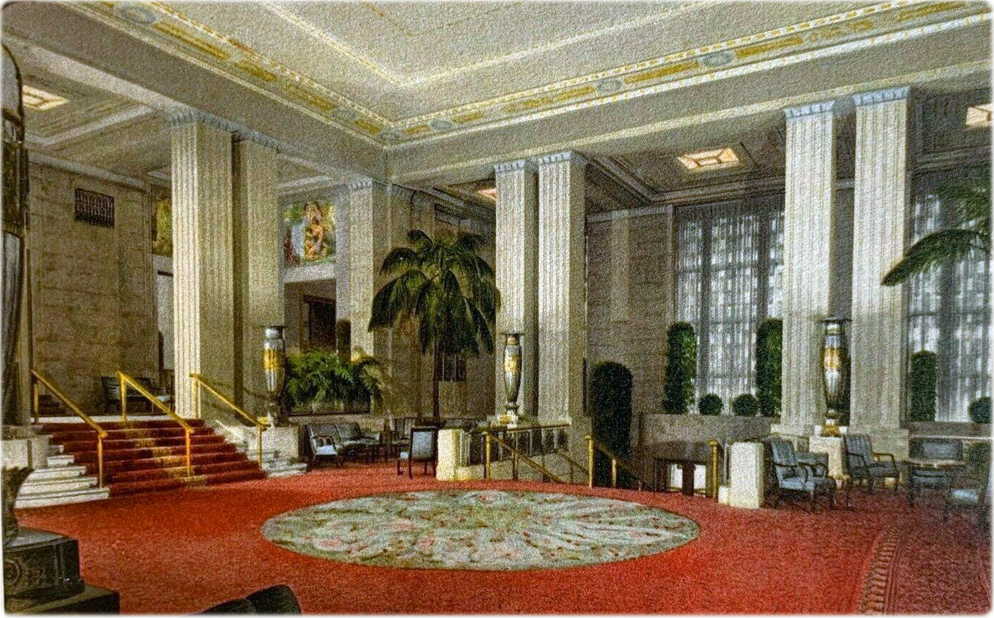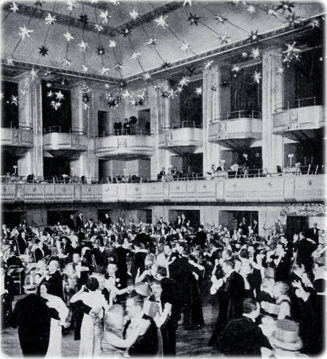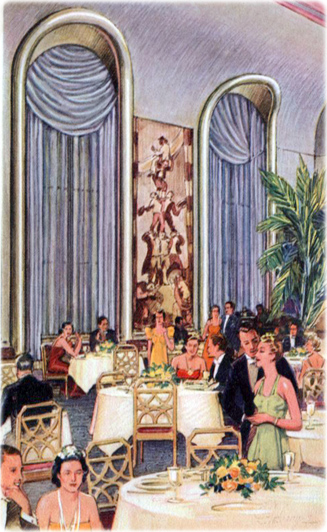
Waldorf-Astoria New York
Interior Design
The original Waldorf Hotel merged with Astoria Hotel, in 1897, to form the Old Waldorf-Astoria Hotel, on Fifth Avenue. The combined hotel was demolished in 1929 and the current hotel opened on Park Avenue in 1931. The Waldorf Astoria New York has carried on the traditions and prestige which were associated with the original hotel.
The current Art Deco Hotel was designed by architects of Schultze & Weaver.
The metal trim throughout the exterior of the building for entrances, shop fronts, windows and so on is of bronze and nickel bronze. Marquees of nickel bronze, indirectly and semi directly lit, are placed over two entrances. Over the main entrance on Park Avenue is a winged symbolic figure: Spirit of Achievement, clone in gleaming nickel bronze, by Nina Saemundsson.
There are some 2.000 rooms and suites, ballrooms, dining rooms, restaurants, lounges. corridors, club rooms and private entertaining suites. The Waldorf Astoria presented a furnishing problem of unusual magnitude and complexity. Leading interior decorators of America and Europe collaborated to solve it. Stereotyped standardization was avoided. Each guest room and suite have individual character such as would be sought in a private residence distinguished at once for its comfort and the quality of its taste.
The interiors have been designed in such a way that they have varied interest and at the same time are harmonious when entered from one gallery or room to another. Rich natural materials such as marbles, matched woods, marquetry panels and various kinds of stones, bronzes and nickel bronzes have been used for the interiors.
The twin towers, rising centrally above the main lobby of the building, were designed especially for residential suites, each one is a self-contained residence apartment with complete Waldorf service. There are special provisions, such as boudoir-dressing rooms, separate entrances, special elevators and other exclusive services to ensure privacy. The Towers are being reformed since 2017.
There are specially designed accommodations for public functions and private entertaining. Entirely self-contained accommodations of various capacities are provided, so that each public function and private social affair may have its appropriate setting. For these purposes, separate elevator, food and other services are installed.
Many of of the traditional features of the old Waldorf was retained in the hotel on Park Avenue, such as the Peacock Alley, the Empire Room and the Astor Gallery. Some paintings and other decorative details are used in new and appropriately designed settings with excellent effect in the Waldorf Astoria.
Main source: Facts about the Waldorf-Astoria by the Hotel Waldorf Hotel Corporation, 1938.

|
Copyright © Geographic Guide - Historic Hotels in NYC. |

The Waldorf-Astoria Park Avenue foyer in the early 1930s. A modern treatment with classic Pompeiian influence. Murals painted by Louis Rigal who also designed the remarkable Wheel of Life Rug. The semi-indirect lighting comes from a marble panel in center of ceiling and from eight urns arranged about the room. On the left is the stairway to the terrace (vintage postcard by H.W-A. Corp.).
The old Oasis (Peacock Alley Cafes), in the manner of a French café with benches built along the walls and decorated with cartoons by Tony Sarg (Forbes Litho. MFG Co, 1939).
The Grand Ballroom, rising from the third to seventh floor, is 120 feet wide by 135 feet long, with two tiers of balconies and boxes for diner or spectators (published in Facts about the Waldorf-Astoria, 1938).


The Sert Room in a vintage postcard. It occupies the Main Floor, named after José Maria Sert, the Spanish painter whose mural paintings characterized it, according Facts about the Waldorf-Astoria, 1938).

The old clock at the old Waldorf Hotel, photographed at the Waldorf Astoria on Park Avenue by Will Weisberg.

Park Avenue façade.
Waldorf-Astoria New York
Interior Design
